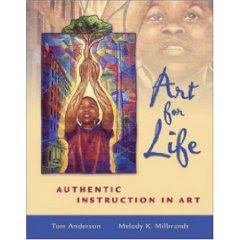Joni
Hough
November
1, 2013
Advanced
Art Education Methods
Review of Ballengee-Morris and Sturh
In
the article, “Multicultural Art and Visual Cultural Education in a Changing
World,” Ballengee-Morris and Sturh begin by stating the importance of teachers
understanding culture and cultural diversity, which should include issues of
power, history, and self-identity. These
are important to the school reform model of education that is proposed in this
article. To do this teachers and
students must learn to look critically at their own culture as well as the
cultures of others.
Ballengee-Morris
and Stuhr point out that history, heritage, traditions, and culture (which is
ever changing) of social groups is what creates diversity. Culture influences our understanding and
action, which is why it is important to learn about the culture and values of
others. Culture is comprised of one’s
age, gender, sexuality, social and economic class, exceptionality, geographic
location, religion, political status, language, ethnicity, and racial
designation. One’s position within these
groups are often the basis of positions of power and acts of discrimination.
Multicultural
Education is a school reform movement that began in the 1960’s. Two of the approaches to Multicultural
Education are Multicultural Education Approach and Social Reconstructionist
Approach. Multicultural Education
Approach schools have diverse populations.
This trend has been reversed in recent years as schools are becoming
more and more segregated. This approach
also includes teaching students about the contributions of diverse groups of
people. Unfortunately in many classrooms
if this is employed at all, it is superficial and only serves to reinforce stereotypes.
The
Social Reconstructionist Approach is similar to the Multicultural Education
Approach. The main difference is that
the Social Reconstructionist Approach also aims to make changes in the
community for the benefit of discriminated against groups.
Ballengee-Morris
and Stuhr present Stuhr, Petrovich-Mwanike and Wasson’s six position statements
about multicultural art education.
Ballengee-Morris and Stuhr then give a curricular example of using
violence as a key concept. This example
could work great in a modified TAB classroom or it could be modified to work in
a full TAB classroom.






No comments:
Post a Comment